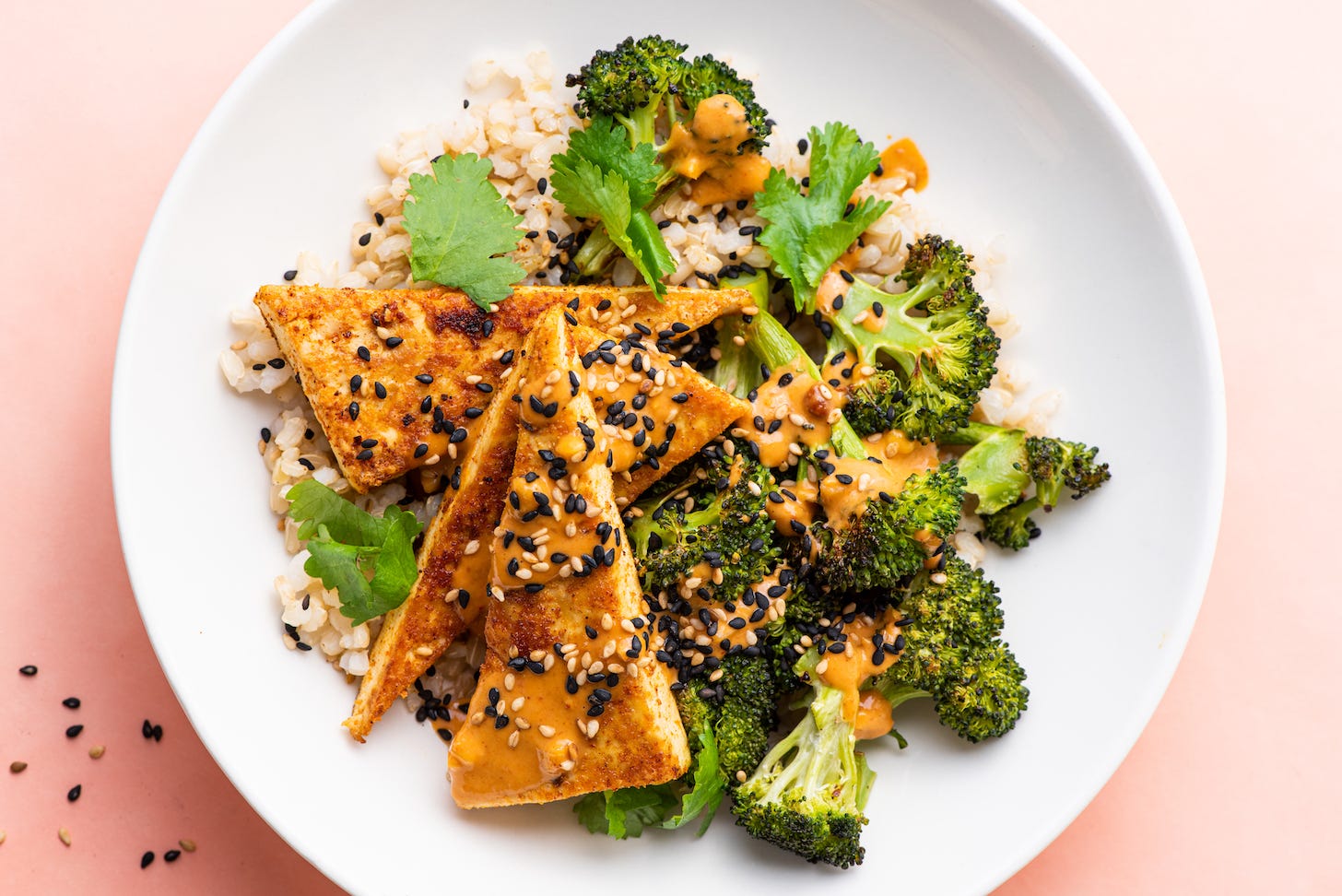When I first started removing meat and dairy from my plate nearly a decade ago, all that was left were simple carbs (bread, pasta, and potatoes) and the few vegetables I was eating regularly at the time (tomatoes, cucumbers, and bell peppers, basically).
It didn’t take long to realize these limited food groups just wouldn’t cut it. I was… well, hungry! It became clear that I’d have to completely rethink how I structured my meals and what they consisted of. So, I slowly started to experiment with things like beans, chickpeas, and tofu - hence how The New Baguette was born.
When I tell people I don’t cook with meat, their first question is without fail, “But where do you get your protein?” (Never mind that when people eat the Standard American Diet, we rarely quiz them on where they get their fiber, antioxidants, etc.)
Protein is literally everywhere - not just meat. It’s in vegetables, grains, legumes, nuts, and seeds. Which is why when you ask a plant-based eater the protein question, they usually dismiss the concern. It’s 100% possible to meet all your protein needs without animal products. (Protein is protein no matter where it comes from.)
However, plant-based eaters do have to be more conscious of it than meat-eaters. Even I, as a professional food person, sometimes under-eat or eat the “wrong” things when I’m short on time.
Whether you’re vegan or just interested in eating less animal foods, below I’m tackling: how to know you need more protein, my favorite sources of plant-based protein, tips to incorporate more of them into your life, and [as always!] lots of recipe ideas…
The rest of this post is for paid subscribers, but fun news! Annual subscriptions are 20% off for a limited time (through July 17th). Click here to upgrade.
Keep reading with a 7-day free trial
Subscribe to The New Baguette to keep reading this post and get 7 days of free access to the full post archives.







